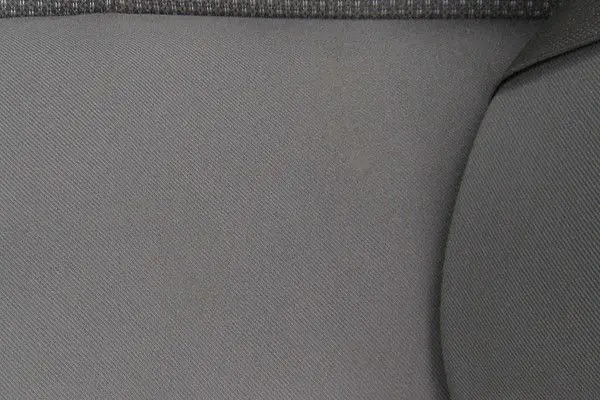Page Contents
What causes burn holes in car seats?
Burn holes in car seats are usually caused by cigarettes, cigars, or other smoking materials. The hot ash or ember burns through the upholstery fabric, leaving behind a hole, often with charred or melted edges. Other potential causes of burn damage include hot tools like soldering irons or clothing irons coming into contact with the seat. In some cases, a focused beam of sunlight through the windows can heat up an area of the seat enough to cause melting or scorching.
How to assess the damage
When discovering a burn hole in your car’s seat, the first step is to thoroughly assess the damage. Some key things to check:
– Size of the hole – is it a pinpoint hole or a larger melted area?
– Depth of damage – is it only surface level or did it burn through multiple layers?
– Location on the seat – is it in a visible spot or hidden area?
– Type of seat fabric – synthetic upholstery reacts differently than natural fibers.
– Other impacts – is the burn accompanied by cuts, tears or other wear?
Gently pressing around the damaged spot can help reveal how deep and extensive it is. This also helps determine how feasible DIY repairs will be versus needing professional upholstery work.
Cleaning the area
Once you’ve assessed the burn hole, start by cleaning the area to prepare it for repair:
– Carefully scrape or brush away any loose, charred fabric fibers.
– Use tweezers to remove any embedded ashes or embers.
– Vacuum up debris around the hole.
– Lightly sponge clean the damaged area to remove odors or soot stains.
– Let the spot fully dry before attempting repairs.
Proper cleaning lets patch materials adhere optimally for the most seamless fix. Avoid using harsh chemicals that could degrade or discolor surrounding upholstery.
DIY repair options
If the burn hole is relatively small and surface level, you may be able to repair it yourself using basic craft supplies. Some DIY options include:
Fabric paint infill
– Select fabric paint that matches the seat’s original color.
– Use a small brush to liberally apply layers of paint into the hole until filled flush with seat surface.
– Let paint fully cure before use, typically 24-48 hours.
Iron-on adhesive patch
– Purchase premade iron-on mending tape or an upholstery patch kit with adhesive backing.
– Cut a patch to overlap the hole by about 1/2 inch around edges.
– Follow package directions to iron the patch in place for a permanent bond.
Sewn mend
– Cut a swatch of replacement fabric to generously cover the hole.
– Turn the seat over to access underside.
– Hand sew the fabric patch over and around the hole using sturdy stitching.
– Add backing patches for extra strength if needed.
Pros and cons of DIY repair
| Pros | Cons |
|---|---|
| Very inexpensive | Results may look visibly patched |
| Convenient and fast | Durability varies depending on technique |
| Prevents further damage | Only works for smaller holes |
DIY repairs are best for minor damage you just want to cover up inexpensively. For professional-looking, long-lasting results, larger holes will require upholstery shop work.
Professional reupholstery options
For moderate to extensive burn damage, or holes in highly visible seating areas, your best bet is to take the seat to an auto upholstery shop for repairs. Professionals have specialized tools, materials and expertise to make damages virtually invisible. Common repair techniques include:
Patch inserts
The burnt section is precisely cut out then a new fabric patch is inserted and sewn into place. This preserves original upholstery fabric around the hole.
Full panel replacement
The entire seat cover panel containing the damaged area is removed and replaced with a new fabric panel.
Foam repairs
If burns penetrated the seat foam and springs, new foam inserts or full seat disassembly may be required.
Reupholstery
For extensive damage, completely reupholstering the seat with new foam, springs and upholstery fabric may be the best solution.
Costs of professional repair
| Repair type | Average cost |
|---|---|
| Patch insert | $50 – $150 |
| Panel replacement | $200 – $350 |
| Foam repair | $100 – $250 |
| Full reupholstery | $500 – $1000 |
Prices vary widely based on labor rates in your region, seat size and fabric. Get estimates from a few shops before deciding on the best value.
Preventing future burn damage
To avoid more smoked-up seats, be diligent about fire safety:
– Never leave lit smoking materials unattended in vehicles.
– Use deep ashtrays securely placed in cupholders.
– Don’t toss hot ashes or butts out the window while driving.
– Install flame-retardant seat covers in smoking vehicles.
– Avoid leaving magnifying items on seats that can concentrate sunlight.
With vigilance and proper repairs, burn holes don’t have to permanently damage your auto upholstery. Address any damage promptly and choose the best fixing method for long-lasting results. Your fully restored seats will look pristine and last for many more miles of comfortable driving.
